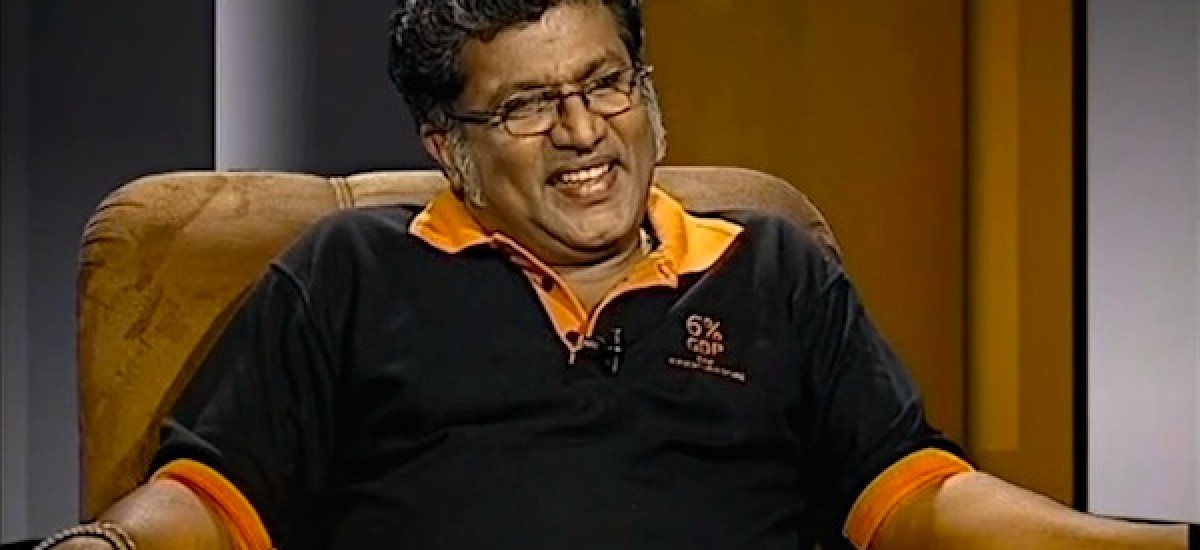Chandragupta Thenuwara is one of Sri Lanka’s best known artists. As noted online, he is the director of the Vibhavi Academy of Fine Arts in Colombo, a not-for-profit art school which he founded in 1993 as an independent alternative to state-run art institutions, with the aim of teaching young and marginalied artists the basic tenets of fine art practice under the instruction of practicing artists.
In this programme we start by discussing the enduring ethnic divides and identity politics in Sri Lanka through the frame of Thenuwara’s son, and his naming. We use this as an entry point a discussion about the artist’s own identity and how it developed, growing up as he did in the East of Sri Lanka, having being born in the South and after his studies, returning to live in Colombo.
Thenuwara’s speaks about his father’s early influence in becoming an artist, and how even from a very modest household, he always had the opportunity to draw and paint as a child. He also makes the point that his father was, as a government servant and teacher, involved in politics, a trait which we half-jokingly note was clearly passed down to son.
Looking at Thenuwara’s work in the 90s, and juxtaposing his iconic Barrelism with the barbed wire that features so prominently in his art today, we discuss whether to him as an artist, barbed wire is to Sri Lanka today, what barrels symbolised in the 90s. Thenuwara talks about a society framed today by barbed wire, how space today is demarcated and defined with the use of barbed wire and the violence embedded into this.
We then talk about the politics of remembering, and why for Thenuwara the anti-Tamil pogrom and violence of July 1983 as well as the violence inherent in beautifying Colombo by erasing all markers of a violent past is so important, when government and country writ large may want to forget, and move on. Thenuwara speaks about the importance of memory, and of recording for posterity the violence that is part of Colombo’s, and Sri Lanka’s socio-political fabric. In this context, we also talk about the recent obliteration of Road Painting Commemorating Neelan Tiruchelvam on Kynsey Road, which in fact, Thenuwara painted.
We talk about Thenuwara’s association with, and by extension, approach to art as part of the No Order group, which when it released its manifesto in August 1999 suggested that art was rooted in a specific context, and that it was both a felt experience as well as an intellectual experience. Thenuwara explains this further, and also how he approaches the creation of art. We use this to explore whether as an artist, Thenuwara has sensed, since 1999, any shift in the way audiences perceive his art, and art as a political construct.
This then leads to a discussion about Thenuwara’s politics, and how it is inextricably entwined with his art, and his life as an artist. In particular, we talk about the issue the t-shirt he sports during the interview clearly flags – the on-going struggle by FUTA around increasing Sri Lanka’s spending on public, and in particular, tertiary education. We talk about whether FUTA’s struggle, and his support towards it as an artist, really has any wider social and political traction, and why the issue is so fundamentally important for the future of education in our country.
We end by talking about how difficult it is to be an activist, teacher and artist combined, and why Thenuwara – who is in fact all three – thinks it is his duty to do and say what he does.
Interview – Chandraguptha Thenuwara from Young Asia Television on Vimeo.


